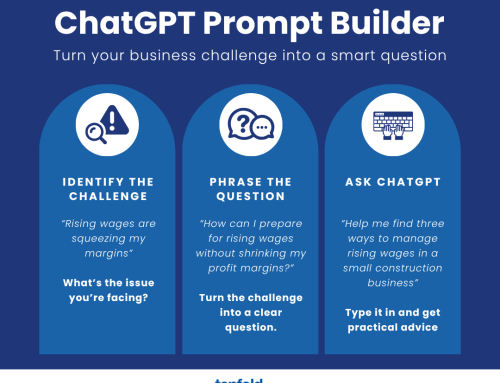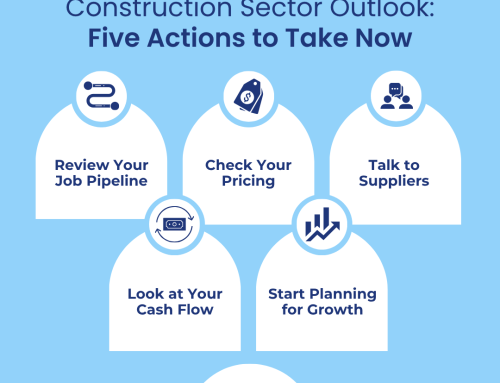Smart Choices, Bigger Profits: How Electrical Contractors Can Select the Right Commercial Jobs in 2025–26 [Examples]
The upcoming year is expected to bring about a considerable shift in the Australian commercial construction industry. While there is currently a slowdown in private retail projects and office developments, there is also a noticeable increase in projects within the public sector and utilities. By focusing your efforts on the most promising segments of the market, you can enhance your revenue and profit margins without excessively straining your workforce.
I’m Ashley Thomson, an electrical business coach at Tenfold Coaching, where I work closely with contractors to help them achieve sustainable growth and increased profitability. As a seasoned electrician business coach, and specialist in business coaching for electricians, I’ve spent over fifteen years in the commercial electrical sector, running my own contracting firm before moving into coaching. Through more than 300 one-to-one engagements, I’ve guided owner-operators from $500,000 to $3 million in annual revenue, often lifting net margins by 20–30 percent. My hands-on industry experience, combined with proven strategic frameworks, means you can trust me to help you select the right projects and maximise profit.
Understanding the 2025-26 Commercial Construction Landscape
WT’s June 2025 Australian Construction Market Conditions Report indicates that activity in the industrial and social building sectors is significantly above the averages recorded over the past ten years. Specifically, industrial construction starts last year were 41 percent higher than the average from 2014 to 2023, while social building projects, including aged care facilities, student accommodation, defence infrastructure, and stadiums, increased by 22 percent. Projects in the utilities sector, which encompass renewable energy initiatives as well as water and wastewater infrastructure, are also 32 percent above their historical norms. In contrast, private commercial construction work is only 6 percent higher than the average over the previous decade. This disparity suggests that contractors should reconsider the sectors they concentrate on to optimise both their workload and profitability.
Targeting High-Growth Sectors for Maximum Profit
Public sector funding for hospitals, schools and civic buildings, together with major utilities programmes, is the key driver today. Education projects are ramping up in every state, while the aged care pipeline is swelling under demographic pressures. Industrial facilities, especially logistics and warehousing, continue to expand thanks to e-commerce growth. Even civic developments, such as libraries and council offices, are seeing renewed government investment. Focusing on these segments ensures work pipelines that stay open longer and margins that hold firm against rising costs.
A Decision Matrix for Strategic Job Selection
To select the most suitable commercial work, carefully consider each opportunity by evaluating factors such as the project’s overall value, potential profit margin, level of technical complexity, and payment terms. You can use this table to compare different common types of jobs in the industry.
| Job Type | Project Value | Average Margin | Complexity Level | Typical Payment Terms |
|---|---|---|---|---|
| Public sector utilities | High (>$5 m) | 12–15 percent | Medium | 45 days from milestone |
| Aged care facilities | Moderate ($1–4 m) | 10–14 percent | High | 30 days upon approval |
| Industrial warehouses | Moderate ($2–6 m) | 9–12 percent | Low | 30 days after completion |
| Civic buildings | High ($3–7 m) | 11–14 percent | Medium | 60 days with retention |
| Retail fit-outs | Low ($0.5–2 m) | 8–10 percent | Medium | Upfront deposit plus draw |
To make effective use of this matrix, you should first assign a weight to each criterion, reflecting the priorities of your Australian business. Then, score each job type based on these criteria. The opportunities with the highest scores should serve as the main focus for your upcoming pipeline.
Implementing Your Selection Strategy
First, refresh your target-client list to highlight contacts in the public sector, developers in aged care, and major logistics operators. Update your proposal templates to emphasise experience in these segments and align your technical resumes with sector-specific requirements. Then, adjust your resourcing model so that critical roles such as project managers, site foremen, and specialised electricians are available for high-growth work. Finally, track your live pipeline against these segments on a monthly basis to ensure you are capturing the right enquiries and converting at the highest rates.
Electrical Business Coach: Let’s Transform Your Pipeline
If you are prepared to sharpen your project selection skills, refine your proposals and secure the fastest-growing commercial work opportunities, let’s have a conversation. As your dedicated electrical business coach, I will guide you through a customised strategic planning session that aligns your strengths with the highest-margin opportunities in the public sector, utilities and industrial sectors. Together, we will develop a roadmap to sustainable growth and higher profits. Get in touch with me today to book your one-to-one session and take the next step towards making smarter choices and achieving bigger profits.
Frequently Asked Questions
What types of commercial electrical jobs are expected to experience the most growth in the years 2025 and 2026?
The public sector utilities, aged care facilities, and industrial sites are projected to see the strongest expansion. This growth will be driven by government expenditure, demographic changes, and the ongoing logistics boom.
How do I adjust my pricing for work in the public sector in Australia?
Incorporate standard escalators for labour and materials, consider longer payment terms, and include clear schedules for variations. A margin buffer of twelve to fifteen percent is realistic.
What should I look for in aged care facility projects?
Check the accreditation status of the operator, ensure compliance requirements are being met, and review the timelines for staged handovers. These types of jobs typically necessitate a higher level of upfront technical due diligence and require robust safety measures to be in place..
How can I enhance my success rate on industrial projects within the Australian market?
Focus on highlighting smaller, low-complexity achievements such as factory fit-outs and conveyor installations. It’s important to emphasise the speed of turnaround, ease of site access, and experience with high-voltage switchgear.
What is the most effective method for securing civic building projects in Australia?
Register as an approved supplier on various council panels to gain official recognition. Invest in building a strong reputation by showcasing successful projects through detailed case studies and supporting local community initiatives via sponsorships. Additionally, streamline your bid submission process to ensure faster responses and increased chances of winning contracts.
How do I manage cash flow when payment terms extend to 60 days?
Negotiate staged progress claims, retain a small upfront mobilisation fee, and secure a short-term line of credit to cover site-to-office receivables.
Should I still bid on smaller retail fit-outs?
Only if you have the necessary in-house capacity and if the job presents a clear pathway to securing a larger account. Retail work can help to supplement your project pipeline; however, it should not replace higher-margin work in the public sector.
How often should I revisit my decision matrix?
Review and revise it on a quarterly basis. Market conditions change with fluctuations in budgets and policy adjustments, so conducting a regular review helps ensure you stay aligned with the segments that offer the highest growth potential.


![A Decision Matrix for Strategic Job Selection - Smart Choices Bigger Profits - How Electrical Contractors Can Select the Right Commercial Jobs in 2025–26 [Examples]](https://tenfoldcoaching.com.au/wp-content/uploads/2025/07/Smart-Choices-Bigger-Profits-How-Electrical-Contractors-Can-Select-the-Right-Commercial-Jobs-in-2025–26-Examples.png)



